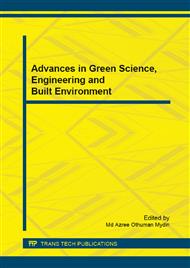p.176
p.180
p.184
p.188
p.192
p.198
p.202
p.209
p.213
Considering Ephemeral Monuments: Towards a Greener Architectural Theory
Abstract:
The existence of buildings employing perishable material, however, is often marginalized partly because architecture is primarily understood as permanent structure built to last forever. This notion is heavily supported in Western architectural theory considering “permanence” (or “firmitas” in Vitruvian term) as one of the fundamental characteristics of architecture, especially monumental architecture which is intended to be “eternal”. To construct a permanent architecture, in general, requires greater amount of resources compared to the ephemeral. The marginalization of ephemeral architecture causes the depletion of resources due to the effort to make most of the buildings permanent since only those which withstand the ravage of time are deemed valuable as architecture This paper explores some meaningful pieces of architecture having values of monuments in Java yet they are constructed as ephemeral architecture requiring periodical renewal. The discussion on these ephemeral monuments will focus on the way perishable material is composed, the way renewal actions are conducted and the meaning of the monuments for their people are enhanced by these actions. In the conclusion, some criticism towards mainstream architectural theory is addressed by including ephemerality in the notion of [monumental] architecture so that we may proceed towards greener architectural theory in which the ephemeral has respectable roles.
Info:
Periodical:
Pages:
192-197
Citation:
Online since:
March 2015
Authors:
Price:
Сopyright:
© 2015 Trans Tech Publications Ltd. All Rights Reserved
Share:
Citation:



